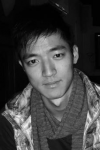Chris Wang
The development of controllable quantum machines is largely motivated by a desire to simulate quantum systems beyond the capabilities of classical computers. For investigating intrinsically multi-level model bosonic systems, using conventional quantum processors based on two-level qubits is inefficient and incurs a potentially inhibitive mapping overhead in the current “near-intermediate scale quantum” (NISQ) era. This motivates the development of hybrid quantum processors that contain multiple types of degrees of freedom, such that one can leverage an optimal one-to-one mapping between the model system and simulator. Circuit quantum electrodynamics (cQED) has emerged as a leading platform for quantum information processing owing to the immense flexibility of engineering high fidelity coherent interactions and measurements. In cQED, microwave photons act as bosonic particles confined within a nonlinear network of electromagnetic modes. Controlling these photons serves the basis for a hardware efficient platform for simulation of naturally bosonic systems. In this thesis, we present two experiments that encapsulate this idea by simulating molecular dynamics in two different regimes of electronic-nuclear coupling: adiabatic and nonadiabatic. In the first experiment, we implement a boson sampling protocol for estimating Franck-Condon factors associated with adiabatic photoelectron spectra. Importantly, we fulfill the scalability requirement by developing a novel single-shot number-resolved detector for microwave photons. In the second experiment, we develop and employ a model for simulating dissipative nonadiabatic dynamics through a conical intersection as a basis for modeling photochemical reactions. We directly observe branching of a coherent wave-packet upon passage through the conical intersection, revealing the competition between coherent evolution and dissipation in this system. The tools developed for the experiments in this thesis serve as a basis for implementing more complex bosonic simulations.
